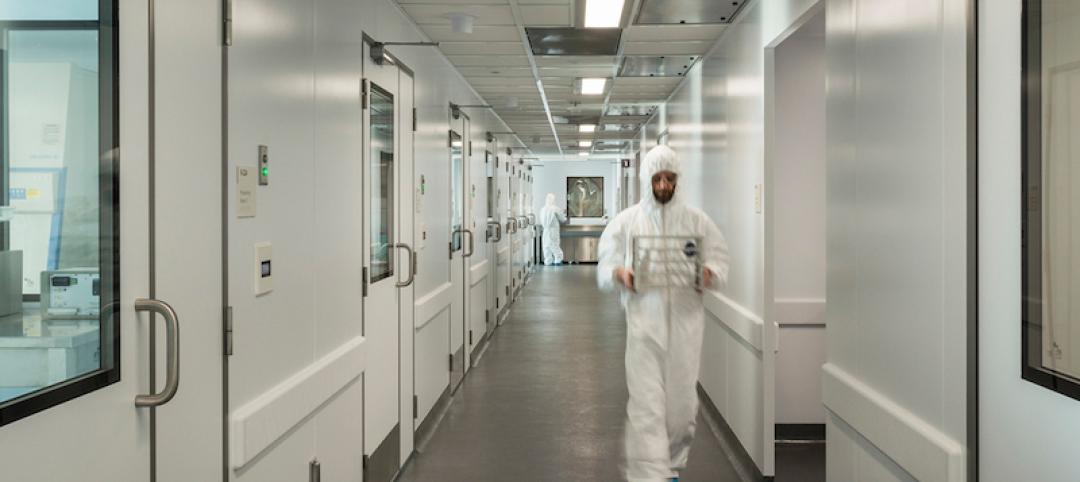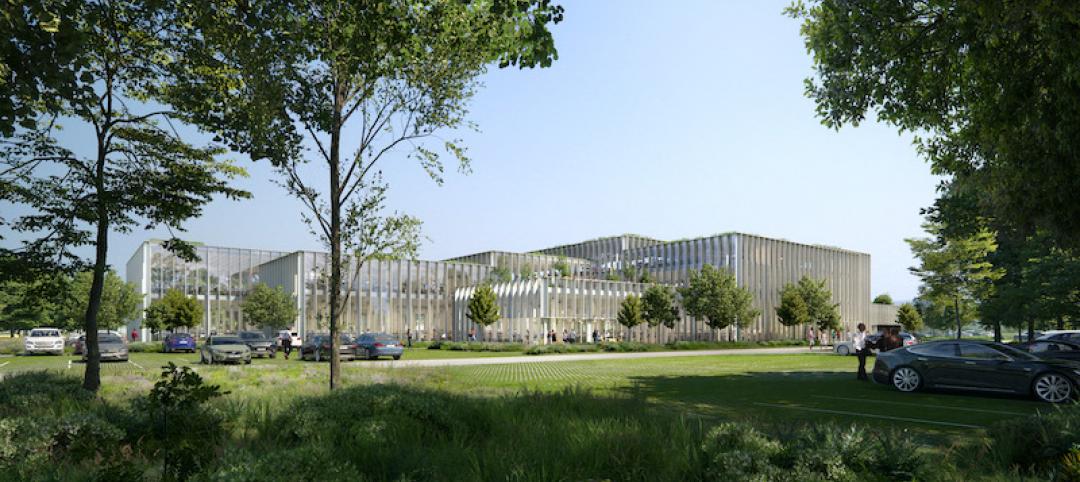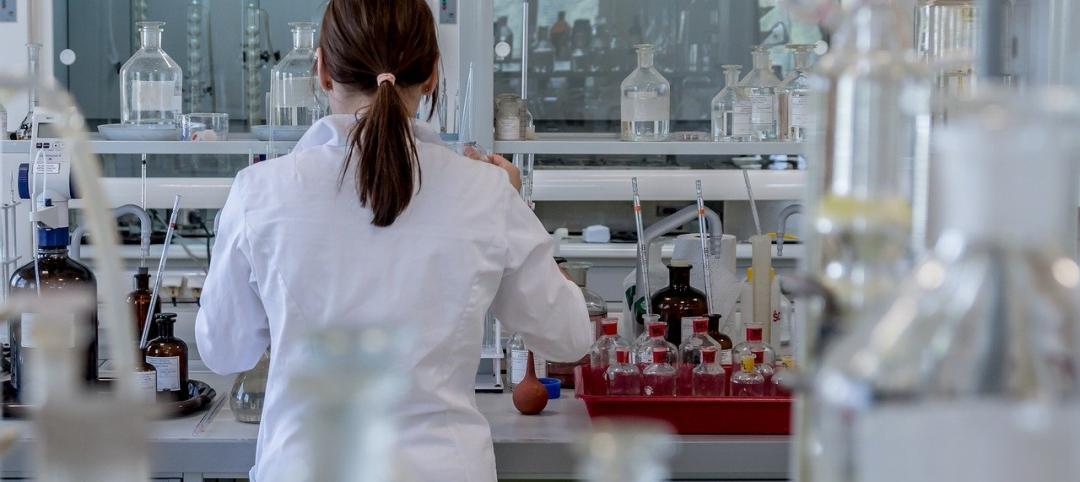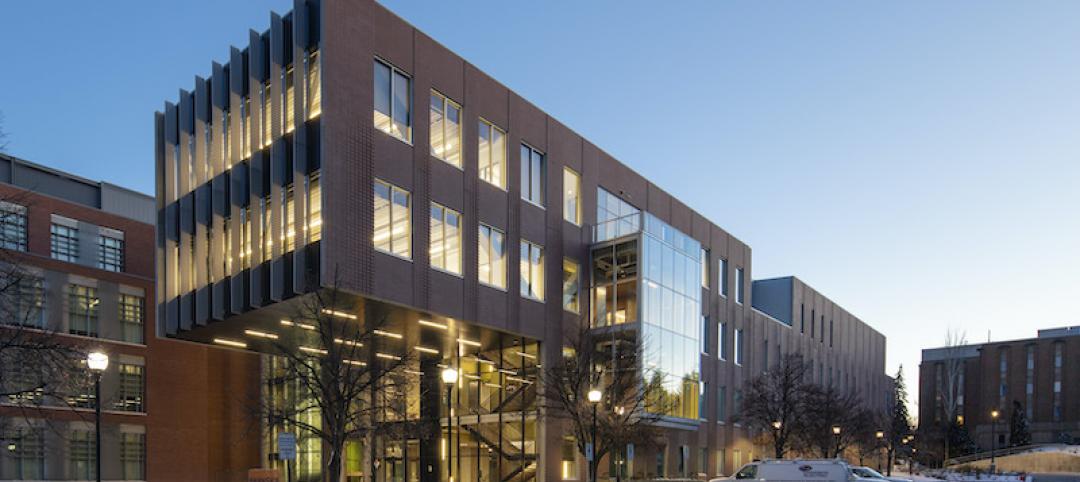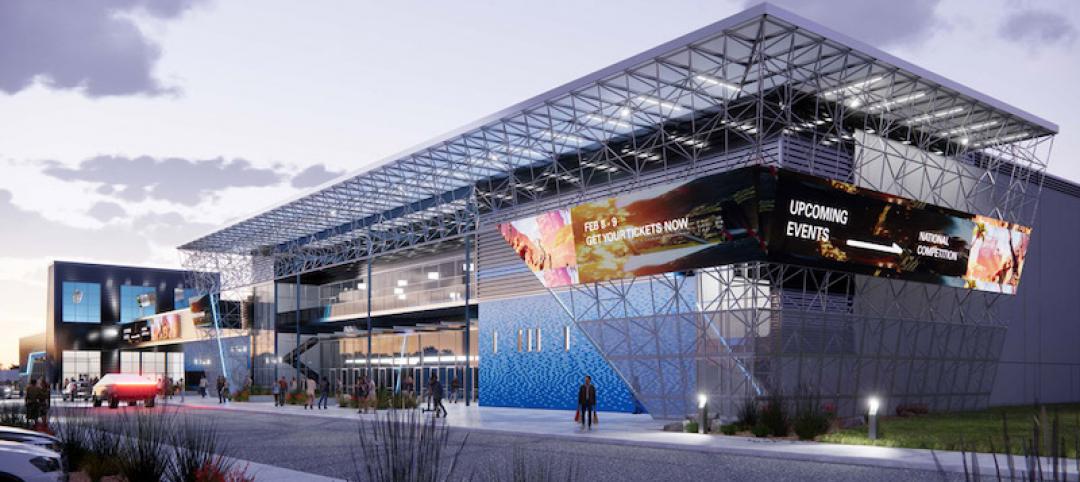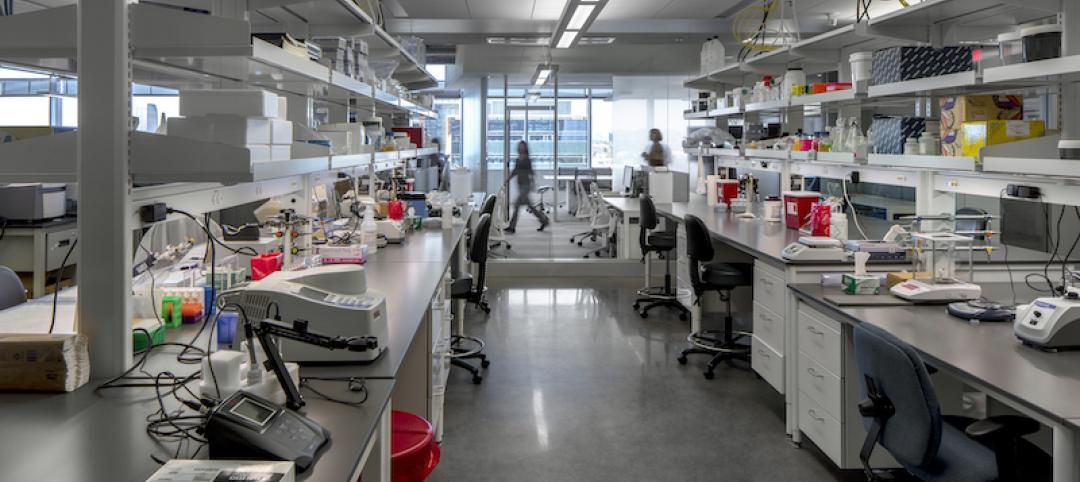In New Brunswick, N.J., a life sciences development that’s now underway aims to bring together academics and researchers to work, learn, and experiment under one roof.
HELIX Health + Life Science Exchange is an innovation district under development on a four-acre downtown site. At $731 million, HELIX, which will be built in three phases, represents New Jersey’s largest-ever investment in life sciences and medical education, according to a press statement.
SJP Properties, in collaboration with New Brunswick Development Corporation (DEVCO), recently unveiled plans for H-2—HELIX’s second phase. A mixed-use, 600,000-sf building, H2 will include build-to-suit lab and office space that can serve a range of uses for large corporate life sciences and technology company tenants. HDR is the lead architect for H-2, and JLL is the building’s leasing agent.
Next to Rutgers University and across from the city’s train station, the 574,000-sf H-1, the development’s first phase, will include the New Jersey Innovation HUB, the new home of Rutgers Robert Wood Johnson Medical School, and a Rutgers translational research facility equipped with a variety of labs to advance the work of 80 research teams and help improve individual and public health. H-1’s two-story ground floor will feature publicly accessible amenities and kiosks, such as a 10,000-sf market hall with food options and a 3,000-sf restaurant. H-1 is currently under construction.
H-3, the final phase of HELIX, is proposed as a 42-story mixed-use building with office space and 220 housing units.
HELIX tenants will have access to the New Brunswick train station. In line for a $49 million renovation, the station will provide access to both NJ TRANSIT, operating nearly 100 train stops in the city each day, and Amtrak.
HELIX also will be in proximity to the headquarters and regional offices of several major health, pharmaceutical, and life sciences companies, including those of Johnson & Johnson, Bristol Myers Squibb, and Ascendia Pharmaceuticals. In addition to next-door neighbor Rutgers University, HELIX will be within an hour’s drive to several colleges and universities, including Princeton University, University of Pennsylvania, and Columbia University.
Related Stories
Architects | Aug 5, 2021
Lord Aeck Sargent's post-Katerra future, with LAS President Joe Greco
After three years under the ownership of Katerra, which closed its North American operations last May, the architecture firm Lord Aeck Sargent is re-establishing itself as an independent company, with an eye toward strengthening its eight practices and regional presence in the U.S.
Laboratories | May 6, 2021
The big shift: How laboratory design should respond to personalized medicine
Crucial to the success of personalized medicine is the “big shift” away from large-scale pharmaceutical manufacturing to small-scale lab manufacturing.
Laboratories | Mar 10, 2021
8 tips for converting office space to life sciences labs
Creating a successful life sciences facility within the shell of a former office building can be much like that old “square peg round hole” paradigm. Two experts offer important advice.
Giants 400 | Dec 3, 2020
2020 Science & Technology Facilities Giants: Top architecture, engineering, and construction firms in the S+T sector
HDR, Jacobs, and Turner head BD+C's rankings of the nation's largest science and technology (S+T) facilities sector architecture, engineering, and construction firms, as reported in the 2020 Giants 400 Report.
Giants 400 | Dec 3, 2020
2020 Laboratory Facilities Sector Giants: Top architecture, engineering, and construction firms in the U.S. laboratory facilities sector
Affiliated Engineers, HDR, and Skanska top BD+C's rankings of the nation's largest laboratory facilities sector architecture, engineering, and construction firms, as reported in the 2020 Giants 400 Report.
Laboratories | Nov 16, 2020
Washington State University’s new Plant Sciences Building opens
LMN Architects designed the project.
AEC Tech Innovation | Sep 18, 2020
New Innovation Center should heighten Port San Antonio’s tech profile
The facility will include a 2,500-seat arena and serve as new home for the city’s S&T museum.
Laboratories | Aug 25, 2020
Video: What's driving the boom in life sciences real estate?
JLL's Audrey Symes discusses the drivers of growth across the nation's life sciences cluster hubs.
Laboratories | Jul 24, 2020
Customized labs give universities a recruiting edge
CO Architects is among a handful of firms that caters to this trend.




